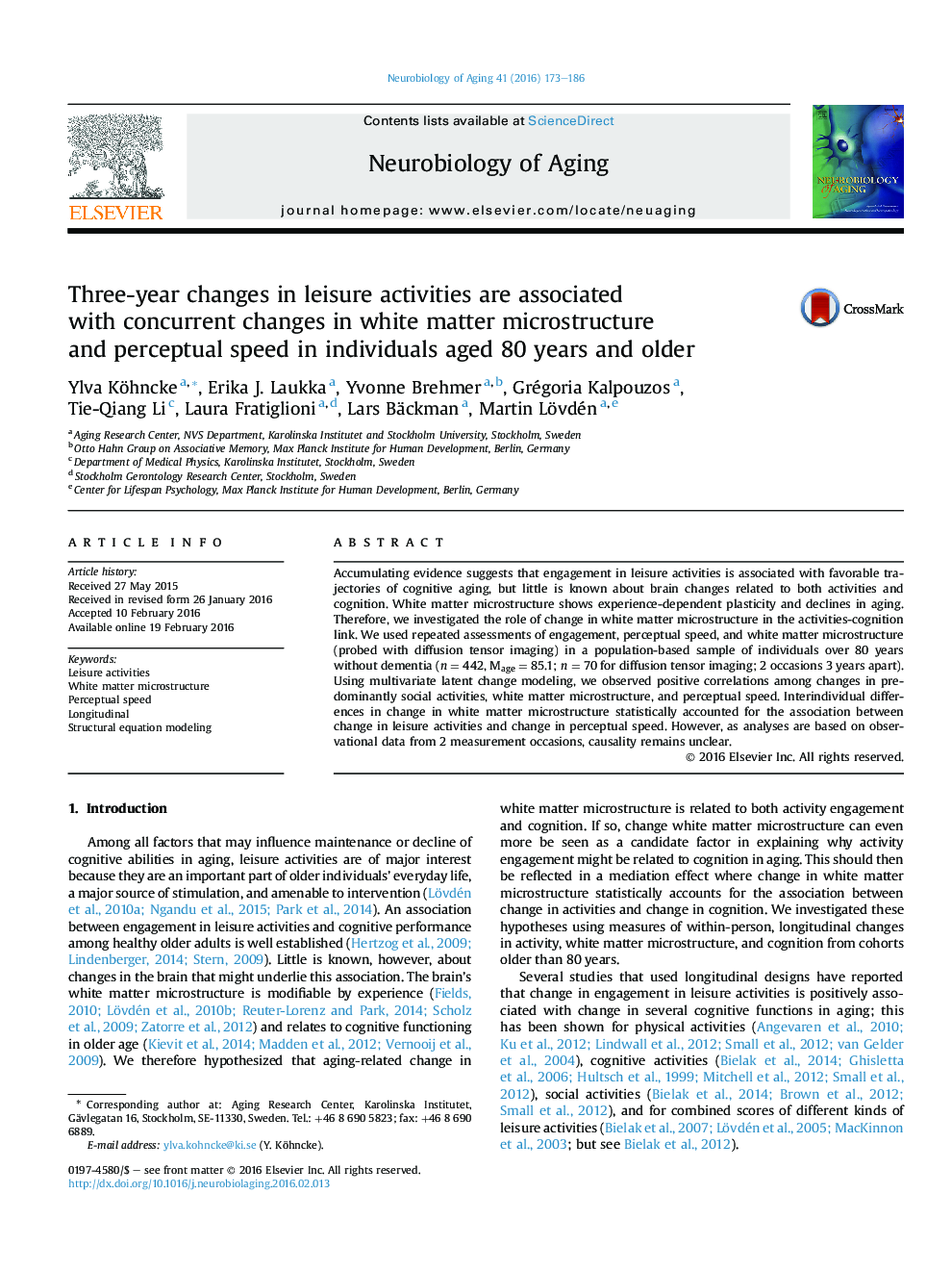| Article ID | Journal | Published Year | Pages | File Type |
|---|---|---|---|---|
| 6803523 | Neurobiology of Aging | 2016 | 14 Pages |
Abstract
Accumulating evidence suggests that engagement in leisure activities is associated with favorable trajectories of cognitive aging, but little is known about brain changes related to both activities and cognition. White matter microstructure shows experience-dependent plasticity and declines in aging. Therefore, we investigated the role of change in white matter microstructure in the activities-cognition link. We used repeated assessments of engagement, perceptual speed, and white matter microstructure (probed with diffusion tensor imaging) in a population-based sample of individuals over 80 years without dementia (n = 442, Mage = 85.1; n = 70 for diffusion tensor imaging; 2 occasions 3 years apart). Using multivariate latent change modeling, we observed positive correlations among changes in predominantly social activities, white matter microstructure, and perceptual speed. Interindividual differences in change in white matter microstructure statistically accounted for the association between change in leisure activities and change in perceptual speed. However, as analyses are based on observational data from 2 measurement occasions, causality remains unclear.
Keywords
Related Topics
Life Sciences
Biochemistry, Genetics and Molecular Biology
Ageing
Authors
Ylva Köhncke, Erika J. Laukka, Yvonne Brehmer, Grégoria Kalpouzos, Tie-Qiang Li, Laura Fratiglioni, Lars Bäckman, Martin Lövdén,
